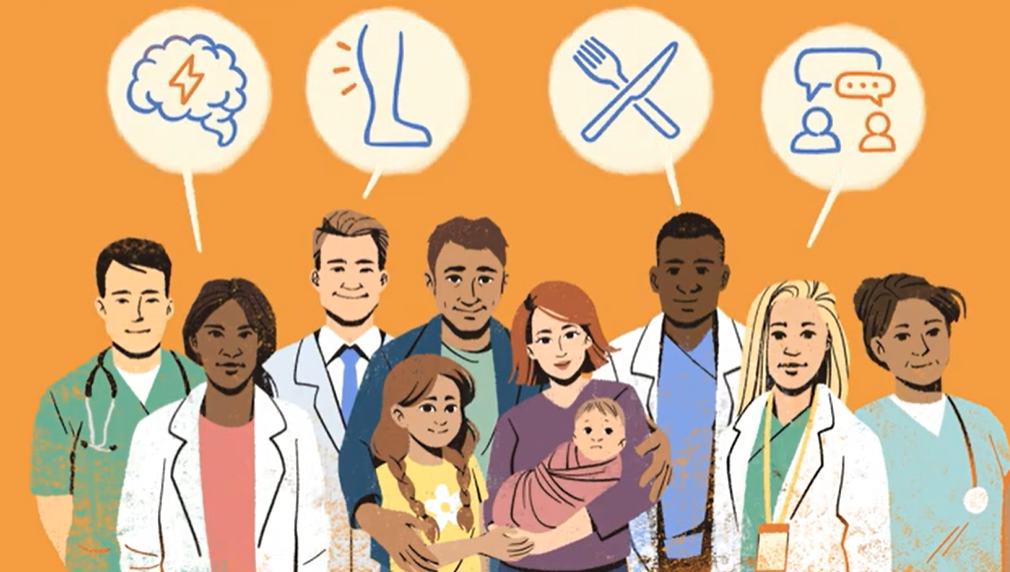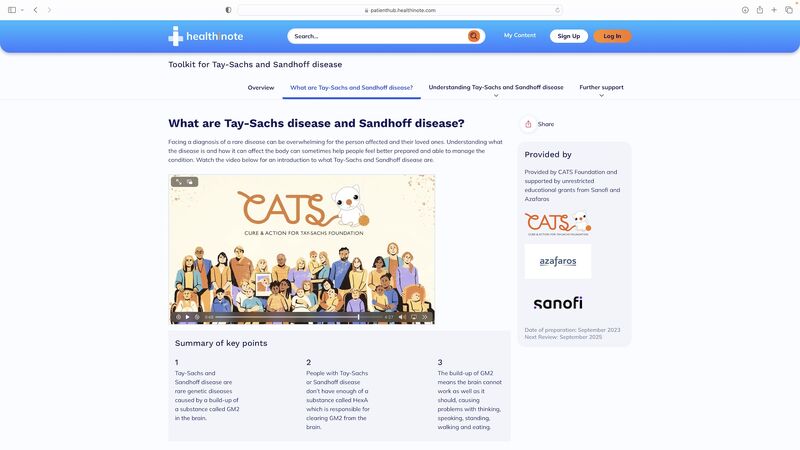Daniel Lewi, co-founder and CEO of the The Cure & Action for Tay-Sachs (CATS) Foundation explains how clinicians can best support patients and their families and caregivers following a Tay-Sachs diagnosis.
This article was published by the National Health Executive and can be read here here
Tay-Sachs is a rare, inherited genetic disorder that affects just 1 in 320,000 people. It is a life-limiting condition, caused by the absence (or insufficient activity) of the beta-hexosaminidase A enzyme, and subsequent lipid accumulation in brain neurons leading to irreversible damage. Most often diagnosed in infants (although juvenile and adult onset can occur in especially rare cases), Tay-Sachs currently does not have a cure and typically leads to death before the age of 5.
Receiving and coming to terms with a Tay Sachs diagnosis is an incredibly difficult experience for families and caregivers, who often report feeling isolated and helpless. Consequently, the ‘connector’ and ‘educator’ roles played by their healthcare providers are pivotal in helping them to navigate the difficult journey of caring for the infant and managing the progression of the disease.
Connecting the web of services and support
Following a Tay-Sachs diagnosis, clinicians are well-placed to act as a connector and a guide for families through the maze of rare disease treatment and support services. The first steps in this process should include referrals or signposting to appropriate local counselling services and support groups, as well as to genetic counselling that can help families understand the inheritance pattern, risks for future pregnancies, and testing options for other family members. Families may also need to be made aware of practical sources of financial support, respite care providers, and palliative care support. Although difficult, discussing end-of-life care as early as possible is crucial. Clinicians can connect families with specialists who can help them through the process of creating advance care plans and making decisions that align with their values and wishes for their loved one.
Education: colouring in knowledge blanks
For healthcare providers who must contend with resource constraints and a lack of previous experience in treating an individual with Tay-Sachs, the best approach to the provision of support is one premised on equipping caregivers with accessible information and co-created education resources.
Although scientists developing treatments for Tay-Sachs disease are making encouraging progress, there is very limited public awareness of the condition’s causes, symptoms and stages. This is compounded by a lack of simple, reliable and accessible information, and it means that families often become confused and anxious when trying to do their own research online. When families cannot become literate in Tay-Sachs disease, they face obstacles in adhering to treatment plans and participating in decisions about care delivery. It follows that clinicians have an important responsibility to educate family members, but to do so effectively they must bear several considerations in mind.

Firstly, the medium of education. Commonly, clinicians share information verbally with patients during appointments. However, in the case of a Tay-Sachs diagnosis, often it’s whole families who are in need of a high volume of information at a time of increased stress and emotion. This makes verbal education a resource-intensive and ineffective approach, unlikely to deliver sufficient reassurance or to equip caregivers with the requisite knowledge and skills to deliver care and engage in shared decision making.
Accompanying verbal information with written resources is one way of ensuring that information is supplied to all those who need it. However, care must be taken to ensure that this written information is available in both digital and physical forms (to enable easier reference and sharing), and that the language is appropriate and free from medical jargon (so it can be easily understood regardless of the reader’s level of health literacy).
To prevent overwhelm, information should be carefully curated and streamlined. By personalising the resources they share, healthcare providers can ensure that only information that is immediately relevant to each individual case is passed on in the first instance, with options to access more detailed information if or when required.
The Tay-Sachs Toolkit
Having recognised the urgent need for better support resources, in 2023 my team at the Cure and Action for Tay-Sachs (CATS) Foundation embarked on a project to develop an interactive digital toolkit. Created in collaboration with patient learning specialists Cognitant Group and supported by unrestricted educational grants from Sanofi and Azafaros, the toolkit was designed to empower those affected by Tay-Sachs disease by providing easy access to simple and reliable information.
The Toolkit is composed of bespoke content suitable for both scientific and non-scientific audiences. Alongside multi-format information about the disease itself, the kit includes an A-Z glossary of terms, signposting to sources of external support, and information on participating in research and clinical trials.

When designing the content, the team decided to take a co-creation approach. This involved consulting with groups of people with first-hand experience of Tay-Sachs, including families, support group members, researchers and healthcare professionals. We used their expertise to inform the types of content and the most helpful topics to focus on, and to identify which external resources we would link to.
The Toolkit is currently being piloted and is available for use via the online Healthinote platform or and the CATS Foundation website. Feedback from users will be assessed to iteratively develop and improve the resource.
Transforming families’ Tay-Sachs journeys
Receiving, understanding and living with a Tay-Sachs diagnosis will never be an easy experience for affected individuals and their loved ones. Whilst I remain hopeful that cure will soon be made available, I also believe that it’s important for healthcare providers to champion the rights of their patients to receive the education and support they are entitled to. By connecting the web of support services and treatment providers, and by delivering access to high-quality, empowering resources, clinicians can transform the experience for families. Whilst the journey will inevitably be heart wrenching, it doesn’t have to be a stressful, lonely or difficult one.
Cognitant
Looking to empower people with health information for better patient outcomes?
Related News
Kidney Research UK invests in Healthinote patient education platform which could support >15m people with long term health conditions
April, 2025
Oxford, January 2025 – Kidney Research UK, the leading charity dedicated to kidney health, has made a significant investment in Cognitant Group Ltd, a leading...
Webinar Insights – Compliance vs Patient Engagement: Can They Co-Exist?
April, 2025
Is compliance really a barrier to meaningful patient engagement in pharma, or are outdated myths holding us back? In this recent webinar, Dr Tim Ringrose,...
Funding awarded to innovations that support early diagnosis and rehabilitation of Stroke patients
March, 2025
SBRI Healthcare, an Accelerated Access Collaborative (AAC) initiative, in partnership with the Health Innovation Network, has awarded £2.5 million for the development of five innovations...